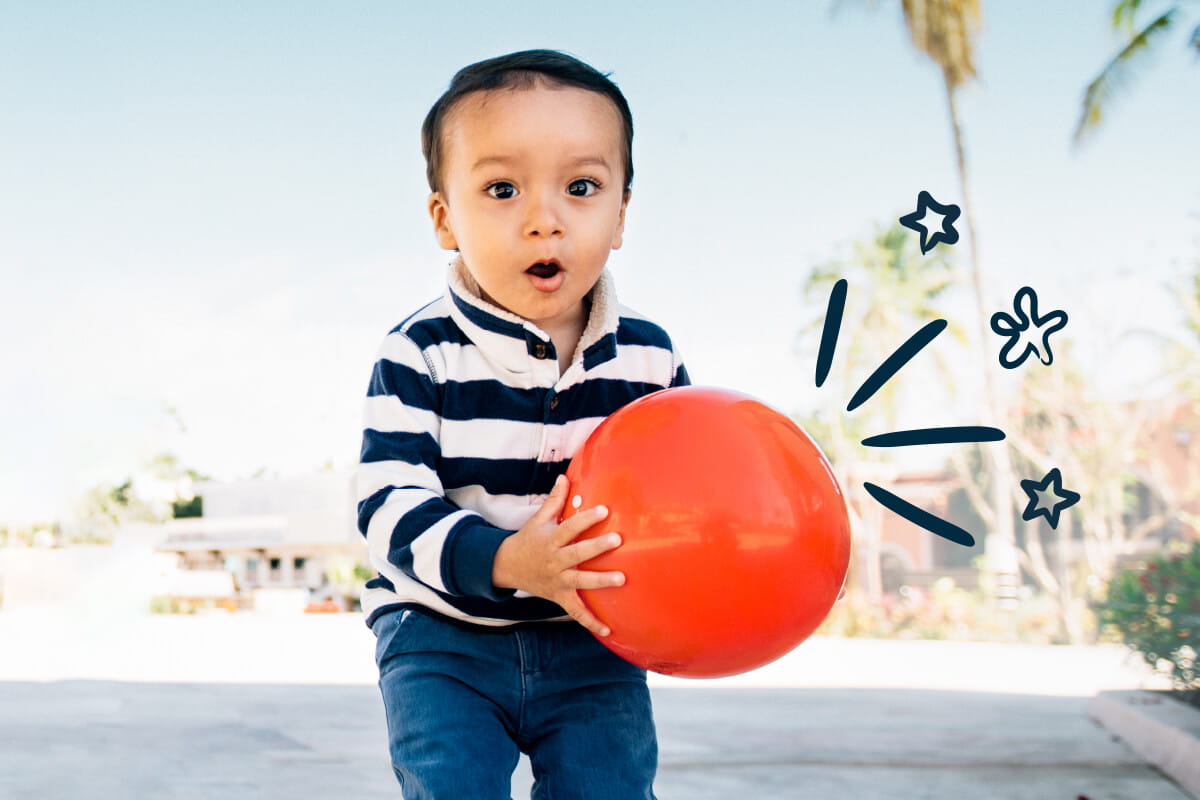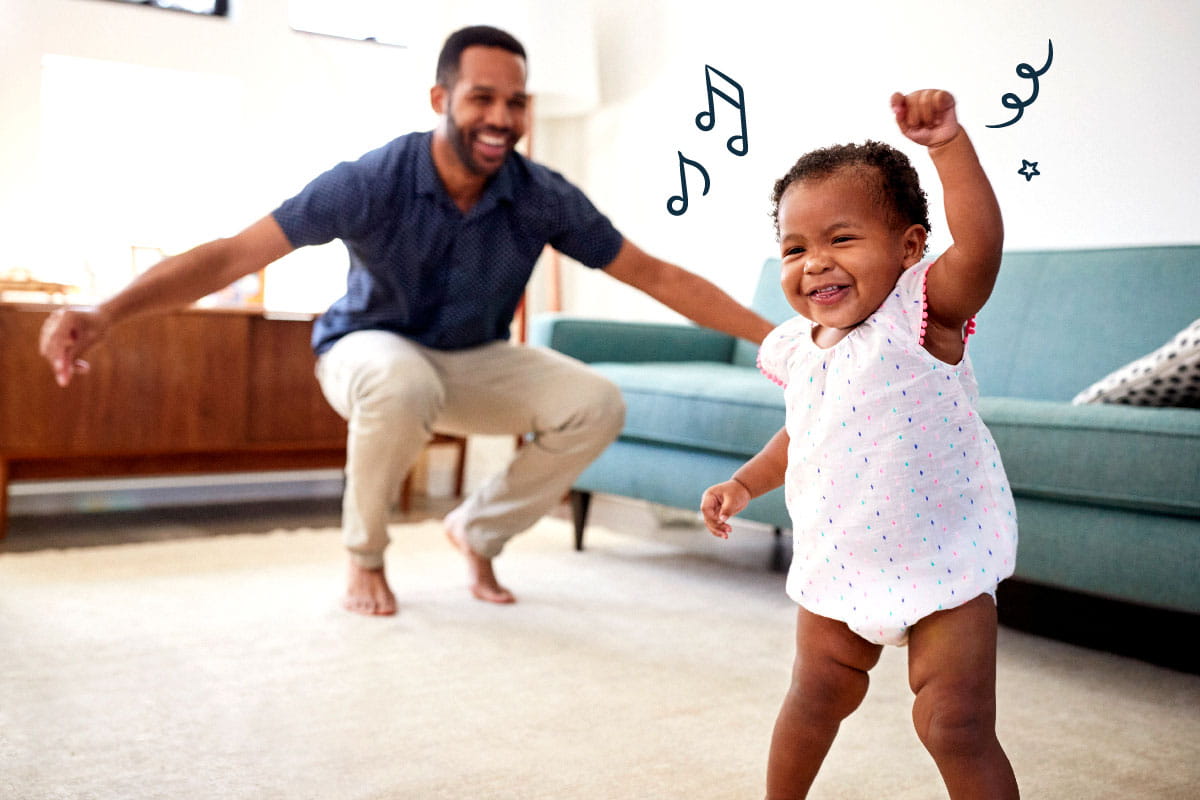10 Counting Activities for Preschoolers to Practice Their 1-2-3's

By Carolyn Sweeney Hauck
Whether you’ve got a budding engineer on your hands or just want to teach your preschooler to count, you can easily boost your child’s math mind with fun activities at home—no fancy books or tools required.
Today we know more about how the brain develops than ever before, and so teaching math to preschoolers doesn’t look at all like the addition and subtraction flashcards of yesteryear. It turns out that to grasp math concepts, preschool-age kids need to touch, feel, see, and interact with physical objects. Why? Numbers are symbols, and understanding symbols involves abstract thinking—thinking that three-year-olds haven’t quite developed.
“Cognitively, preschoolers are not yet able to hold abstract ideas in their minds,” explains KinderCare’s Director of Curriculum Meg Davis, who was integral in developing many of the math activities we teach in our centers. Until they’re capable of abstract thinking, kids need to be able to tie those ideas to the real world to start understanding them. Davis continues, “That’s why it’s important that the activities are relatable to their everyday life experiences and that they’re fun—like counting how many raisins are on their plates and then gobbling them up afterward.”
Armed with a few household items like cracker boxes, dried beans, and chalk, you can incorporate these 10 entertaining counting games into your family together time to help your kids get more familiar with math concepts. These are the real learning deal: All are taken directly from KinderCare’s educational curriculum for young children (albeit with slight adjustments to make them easier for you to pull off at home). In addition to counting, they also support other important math concepts—like sorting, categorizing, and tallying.
Outdoor Ideas
1. Sidewalk chalk dinosaur feet
This dino-themed counting game also teaches size comparisons, and is guaranteed to be a crowd pleaser amongst the preschool set. (What kid doesn’t love dinosaurs, after all?) Outside with sidewalk chalk (or inside with butcher paper and crayons), draw a few big Tyrannosaurus Rex footprints. Don’t worry about your lack of artistic ability: Just make it up! Ask your child to guess how many of his feet might fit inside one giant T-Rex foot. Once he’s made his guess, have him stand inside the footprint and trace his feet until the T-Rex foot outline is completely full. Now start counting and see how close his guess was! Bonus game: Your youngster can then leap from T-Rex foot to T-Rex foot in a kind of dino-hopscotch (and burn off some excess energy in the process)!

2. Sidewalk chalk numbers
Write down numbers on the sidewalk (up to five), and then invite your child to write the numbers as well. (Sure, the three may be backward, but that’s totally okay!) Look around your environment and ask her to identify and count what she sees. For example, ask, “How many trees do you see in our yard?” Write down the number of trees that you see, or even have them draw the trees if they’d like, and keep going with other items in your environment.

3. Rock hunt, sort, and count
Hit the outdoors and go on a rock hunt in your backyard or at the park! When he’s got a nice pile of rocks, pick out four or five different sizes categories and have him sort the rocks by sizes. Keep the fun and learning going by changing the sorting category to something different (like color), and have him re-sort the pile.
Switch the game to addition and subtraction by holding a small number of rocks, say, three, and ask your preschooler how many rocks you’re holding. After he answers, pick up one more and ask him how many rocks you’re holding now. When he answers, tell him, “That’s right, three rocks plus one rock equals four rocks.” Then switch the game to subtraction for a new challenge.
Indoor Ideas
4. Sort…anything
Sorting stuff develops early math skills, and even better, you can do this activity with anything. Got a lot of toy cars lying around? Have her count and then sort them by color or size. Blocks are a great sorting tool, too! She can sort those by size, shape, and color. You can even try including the activity as part of your clean-up routine. Got a bunch of items that need to be put away? Get her excited about picking them up by playing the sorting game first. (Well, it MIGHT work as a clean-up strategy…but we can’t promise.)

5. Play store
No doubt your children love running errands with you, right? (Ha ha, kidding.) Still, you might have noticed them playing store once in a while. Having play money around, and a play cash register if you can manage it, gives kids hands-on learning with everyday math. Acting like Mommy or Daddy exchanging money for goods is not only fun for them, but gives them an opportunity to practice real-life math skills—giving the concept of counting an everyday life context.
6. Make a favorites chart
We often think of charts as an impressive adult tool, but they’re actually super-fun for preschoolers. At this stage in their development, preschoolers are learning to understand similarities and differences between themselves and others, and charts track it all in a nice, visual way that kids can understand! Try making a family chart about, for example, ice cream preferences. Put family member names horizontally in rows and ice cream flavors vertically in columns. Have your preschooler ask each family member about preference and mark the chart accordingly. Reward the effort with a trip to the ice cream shop, of course!
7. Ladybug, ladybug
Remember that thing we mentioned about numbers being abstract symbols? Well, this math activity helps them begin to tangibly understand the meaning of a numerical symbol. Cut out 10 big circles of red construction paper and write the numerals 1–10 on them. Then cut out a bunch of black 1-inch circles. Point to a number on a red circle and ask your preschooler to say the number. Then ask him to glue the same amount of black circles on it.
A simpler take on this game is to use a deck of cards (leaving out the face cards), and have your child count the number of say, clubs, on a card. Then, hand him a pile of dried beans so he can count out the same amount of beans that he sees on the card.
In the Kitchen

8. Making muffins = math
Baking is not only messy fun, it also introduces children to units of measurement—so we say yes to kids in the kitchen! Go ahead and bake away, but take the time to explain what you’re measuring. For example, make banana bread and talk to your preschooler about size comparisons (like how ½ cup of water compares to 1 cup), or the concept of halves as you cut bananas in half. She may not get it right away, but even introducing the idea will go a long way toward building her mathlete brain.
9. Food-label puzzles
This one takes a wee bit more set-up time. Cut the food label out of a cracker or cereal box, and then cut it into six or seven puzzle pieces. This activity simply introduces your preschooler to numbers and percentages used in the world. And food labels are something he should be aware of as he ages. If you have more than one label, you can compare, say, grams of sugar or calories.
10. Count your beans
Start with a jar of dried beans and one die. Have your child roll the die a couple times and, after each roll, have her count the number of dots on the die face up. After she counts the dots, ask her to pull the same number of beans from the jar to create a bean pile. Now put, say, five raisins (or other yummy snacks) in a line and tell her you’ll trade her the raisins for the same number of beans. She’ll first count the raisins and then count the beans to be traded. Continue the game, but try to keep the counting manageable and fun by going no higher than 10. The numbers 11 and up are sometimes referred to by preschoolers as “the tricky teens.”




